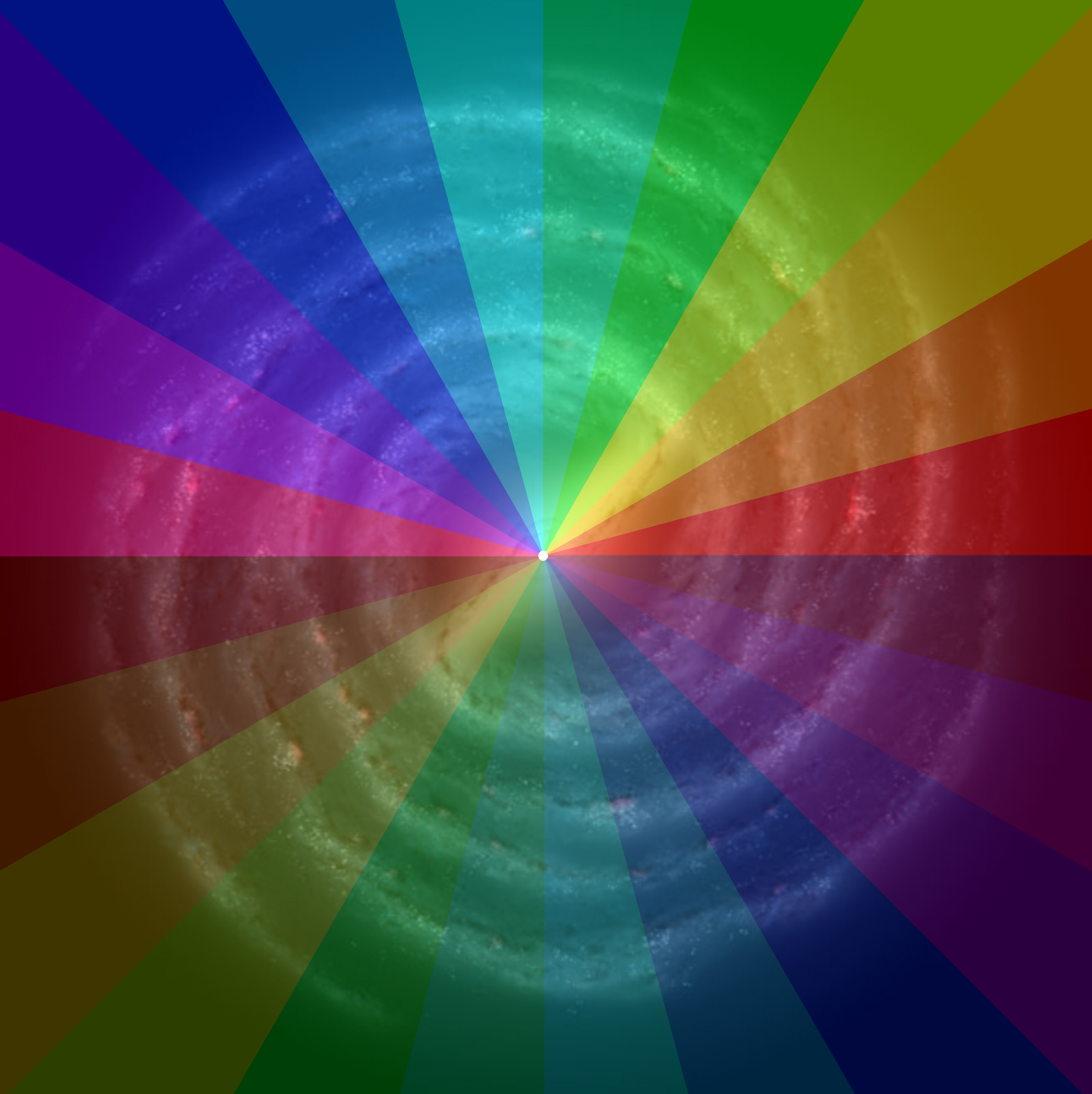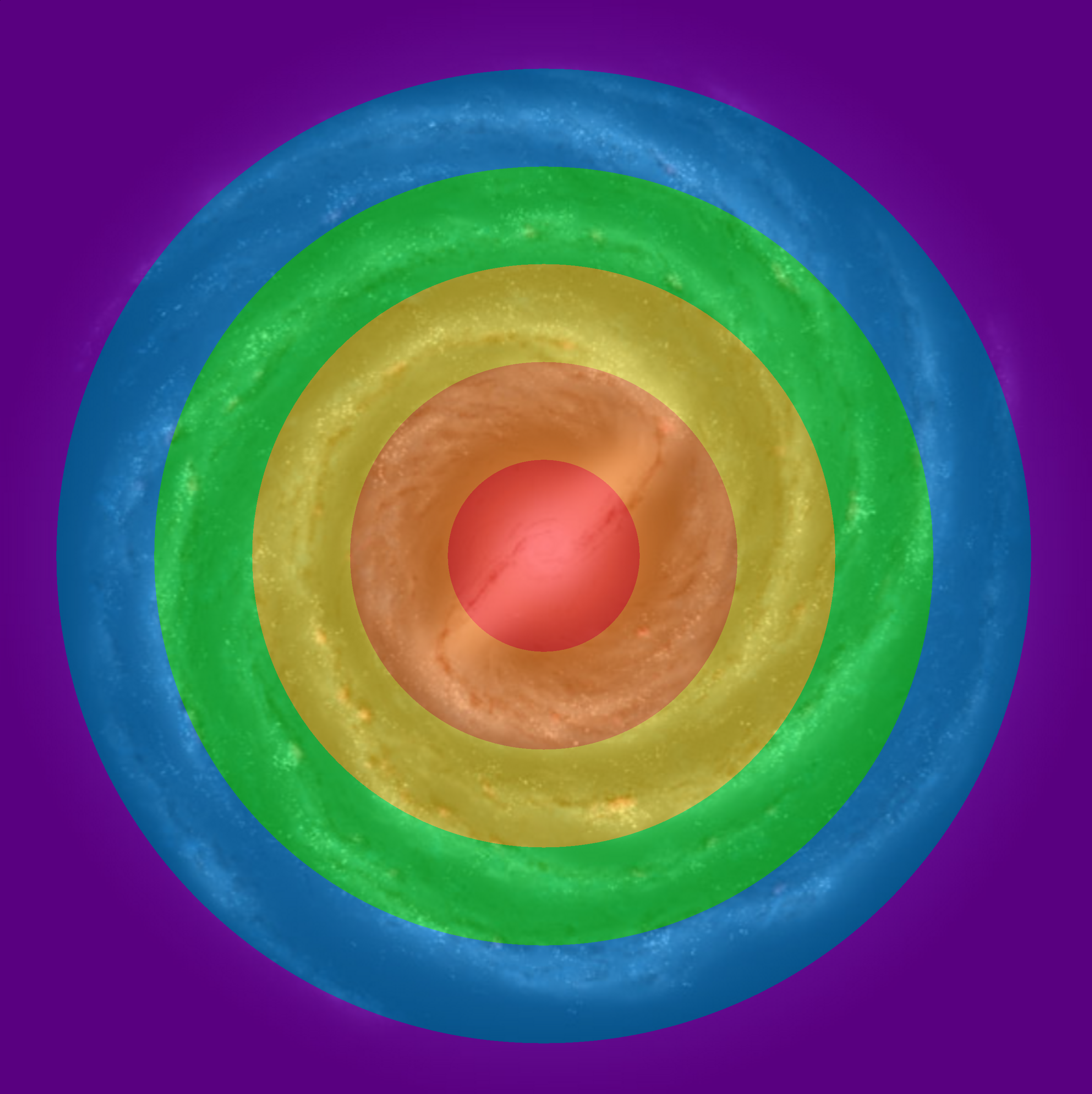Tridian Cartography
Since space has 3 dimensions (as well as the temporal dimension), galactic cartography uses the Tridian coordinate system, as opposed to the the traditional 2-dimensional coordinate system used on planets. Coordinates are written as such: (c,d,p), where c is the distance around the circular plane of the galaxy (sectors) from 0, d is the distance outward from the core (rings), and p is the planar distance from the central plane of the galaxy (levels). 3-dimensional regions of the galaxy where all three of these regional divisions intersect are dubbed blocks, and written as c-d-p where c is the sector, d is the ring, and p is the planar level.
Galactic Map
Lateral Coordinates
The galactic disk, shown here in 2-dimensional format (planar coordination is absent), is divided by radial lines into four lateral quadrants, each of which is divided into six sectors. Lateral coordinates are used to designate the position of any given point relative to the radial line "zero", which originates from Omniphalos (as all latitude lines do) and intersects the Pendulum system (as well as the hypothetical original location of the Ae system). The sectors are sometimes colloquially nicknamed for the most prominent star system within that sector. In the lateral sense, vector direction or position relative to a point is given as either spinward (clockwise along the galactic disk) or driftward (counterclockwise along the galactic disk).Elliptical Coordinates
The circular (or elliptical), lateral disk of the galaxy is divided into rings about 15000 lc thick. These rings, called elliptical coordinate designations, are numbered outwards from Omniphalos (which is the core apex point). Elliptical coordinates are used to designate the position of any given point relative to the core point of the galactic disk (determined to be Omniphalos). The individual rings are not named officially, but they are grouped into regions.Ring Regions (from Omniphalos outwards):
- Omniphalos - the very heart of the galaxy; a supermassive black hole that is largely responsible for the spiral shape of the Orranysis galaxy. Uninhabited.
- Core - the unmanageably high, lethal extent of the cumulative radiation of Orranysis' galactic core. Extends from Omniphalos to roughly Ring 2. Uninhabited except by Xalnrites, insofar as known.
- Core Halo - the innermost section of the inhabited Orranysis galaxy; generally relocation worlds with system radiation barriers. Extends from Ring 2 to Ring 4. Inhabited.
- Inner Rim - the inner band of Orranysis' galactic disk. Extends from Ring 4 to Ring 6. Inhabited.
- Midrim - the middle band of Orranysis' galactic disk. Extends from Ring 6 to Ring 8. Inhabited.
- Outer Rim - the outer edge (also called "the Coast") of Orranysis; often at the far reach of galactic civilization. Extends from Ring 8 to Ring 10. Inhabited.
- The Abyss - fairly self-explanatory; almost totally devoid of any cohesive matter up to the edges of the nearest galaxies. Extends from Ring 10 outwards. Inhabited, though barely so.







Comments